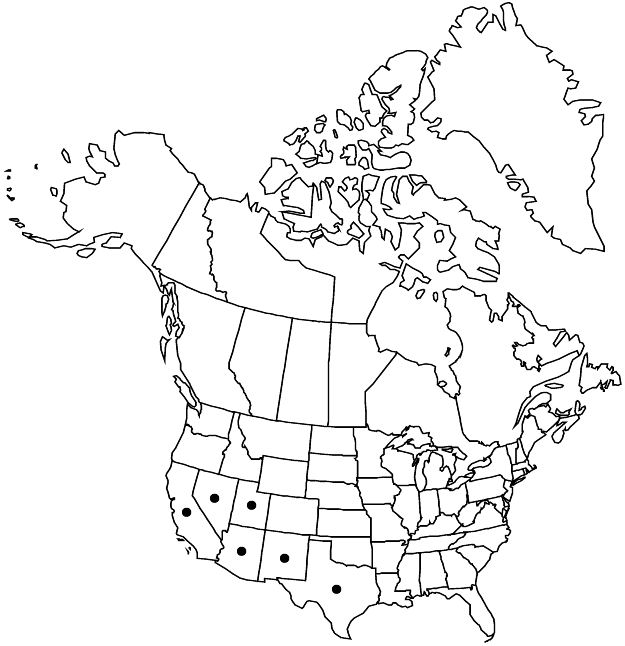Difference between revisions of "Krameria erecta"
Mant. 3: 303. 1827.
FNA>Volume Importer |
imported>Volume Importer |
||
| Line 62: | Line 62: | ||
|publication year=1827 | |publication year=1827 | ||
|special status= | |special status= | ||
| − | |source xml=https:// | + | |source xml=https://bibilujan@bitbucket.org/aafc-mbb/fna-data-curation.git/src/bb6b7e3a7de7d3b7888a1ad48c7fd8f5c722d8d6/coarse_grained_fna_xml/V12/V12_804.xml |
|genus=Krameria | |genus=Krameria | ||
|species=Krameria erecta | |species=Krameria erecta | ||
Revision as of 20:12, 27 May 2020
Shrubs, mound-forming, 1–2 m. Stems erect, with long and short shoots, young branches green, becoming gray with age, strigose, tips often thorny. Leaves: blade linear to linear-lanceolate, on both long and short shoots 0.5–15 × 0.5–2 mm, ape\× acute to mucronate, surfaces strigose, sometimes with multicellular, stipitate, glandular hairs. Inflorescences axillary, solitary flowers (on short shoots only, often appearing clustered because of shoot compression). Flowers: sepals slightly cupped inward, bright pink or magenta, lanceolate to ovate, 8–10 mm; secretory petals pink, 2–3 mm, with oil-filled blisters mostly on distal portions of outer surfaces; petaloid petals 4–6 mm, connate basally, distinct portions green basally and pink or pink with purple edges distally, oblanceolate to reniform, 2–4 mm; stamens didynamous; ovary strigose; style pink. Capsules cordate in outline, with longitudinal ridge more pronounced on 1 face, 6 mm diam., glabrous or densely strigose, spines stout, 2–5 mm, each usually bearing curved, multicellular hairs on basal 1/2 and retrorse barbs near tip. 2n = 12.
Phenology: Flowering Mar–Oct.
Habitat: Sands, gravel ridges, limestone-derived soils.
Elevation: 0–1700 m.
Distribution

Ariz., Calif., Nev., N.Mex., Tex., Utah, Mexico (Baja California, Baja California Sur, Chihuahua, Coahuila, Durango, San Luis Potosí, Sinaloa, Zacatecas).
Discussion
Selected References
None.